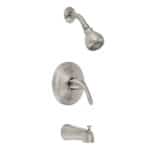Checking your transmission fluid is a simple task that can save you from costly repairs. It’s as easy as checking your oil but just as important. To check your transmission fluid, locate the dipstick, pull it out, wipe it clean, reinsert it, and then check the fluid level and color.
Regular checks help spot issues early. Low fluid levels can lead to transmission damage. Dirty or burnt fluid needs changing. By keeping an eye on your transmission fluid you can avoid big problems down the road.
Many cars need warm fluid for accurate checks. Some newer vehicles don’t have dipsticks and need special tools. Check your owner’s manual for the right method for your car. With a little know-how you can keep your transmission running smoothly for years to come.
A Guide to Checking Your Transmission Fluid
Checking your transmission fluid is a vital part of car maintenance, ensuring your vehicle shifts gears smoothly and efficiently. While newer cars may require professional servicing for this task, many older models offer a simple dipstick method for checking the fluid levels. Here’s how to do it yourself:
1. Safety First: Park and Warm Up
- Park your car: Find a level surface and engage the parking brake.
- Warm up the engine: Let your car idle for a few minutes to ensure the transmission fluid reaches its operating temperature. This will give you a more accurate reading.
2. Locate the Dipstick
- Consult your owner’s manual: Refer to your car’s owner’s manual to find the exact location of the transmission fluid dipstick. It’s typically near the back of the engine compartment and may be labeled “Transmission” or have a brightly colored handle.
3. Check the Fluid Level

- Pull out the dipstick: Carefully remove the dipstick and wipe it clean with a lint-free cloth.
- Reinsert the dipstick: Fully reinsert the dipstick into its tube.
- Pull out again and check the level: Remove the dipstick again and observe the fluid level. It should fall between the “Add” and “Full” marks on the dipstick.
4. Inspect the Fluid Condition
- Color and smell: Healthy transmission fluid is typically red or pinkish and has a slightly sweet odor. If it’s dark brown or black, or has a burnt smell, it may indicate a need for a fluid change.
- Consistency: The fluid should be smooth and free of any grit or debris. If you notice any particles, it could signal transmission problems.
5. Add Fluid if Necessary
- Use the correct fluid type: Consult your owner’s manual to determine the right type of transmission fluid for your vehicle.
- Add fluid slowly: Use a funnel to add small amounts of fluid, checking the level frequently to avoid overfilling.
6. Seek Professional Help if Needed
- If in doubt, consult a mechanic: If you’re unsure about the fluid level, condition, or type, it’s best to consult a qualified mechanic.
- Regular maintenance is key: Follow your car’s recommended maintenance schedule for transmission fluid changes.
Understanding the Dipstick Markings
| Marking | Meaning |
|---|---|
| “Cold” | Indicates the fluid level when the transmission is cold. This mark is less relevant for checking the fluid level accurately. |
| “Add” | The minimum acceptable fluid level. Add fluid if the level is below this mark. |
| “Full” | The maximum acceptable fluid level. Do not overfill beyond this mark. |
| Crosshatched Area | The ideal operating range for the fluid level when the transmission is warm. |
Remember, checking your transmission fluid regularly is a simple yet crucial step in maintaining your car’s health and prolonging its lifespan.
Understanding Transmission Fluid and Its Role
Transmission fluid is vital for your car’s smooth operation. It keeps the gears running well and helps control the transmission’s temperature.
Composition and Function of Transmission Fluid
Transmission fluid is a special oil that works in your car’s gearbox. It has three main jobs:
- Lubricates moving parts
- Cools the transmission
- Helps gears shift smoothly
The fluid is made to handle high heat and pressure. It contains additives that clean and protect metal parts. These additives also help the fluid last longer.
Transmission fluid moves through the gearbox in a set path. It coats gears and other parts as it flows. This coating stops metal-on-metal contact which can cause damage.
The fluid also acts as a coolant. It takes heat away from hot spots in the transmission. This heat then moves to the transmission cooler where it dissipates.
Signs of Low or Degraded Transmission Fluid
Watch for these signs that your transmission fluid needs attention:
- Gear slipping or jerking
- Slow or rough shifting
- Unusual noises when shifting
- Burning smell
Low fluid levels can cause serious problems. They may lead to overheating or gear damage.
Old or dirty fluid can’t do its job well. It may not lubricate or cool properly. This can cause wear on transmission parts.
Leaks are a common cause of low fluid. Look for red or brown spots under your car. These could be signs of a leak.
Check your owner’s manual for the right service interval. Some cars need fluid changes every 30,000 miles. Others can go 100,000 miles or more.
Regular checks can help catch issues early. This can save you from costly repairs down the road.
Step-by-Step Guide to Checking Transmission Fluid
Checking transmission fluid is a simple task that helps keep your car running smoothly. Regular checks can prevent costly repairs and extend your vehicle’s life.
Preparation and Safety
Park your car on a flat surface. Turn off the engine. Set the parking brake. Let the car cool for about 15 minutes if it’s been running. This ensures an accurate reading.
Locate your owner’s manual. It has important info about your car’s transmission. Some cars need to be running when you check the fluid. Others should be off. The manual will tell you which is right for your car.
Gather what you need:
- Clean rags
- Gloves
- Funnel (if adding fluid)
Safety first! Wear gloves to protect your hands. Be careful around hot engine parts.
Locating and Using the Dipstick
Open the hood. Find the transmission dipstick. It’s usually near the back of the engine. The handle may be red or orange. It might say “TRANS” or have a transmission symbol.
Pull out the dipstick. Wipe it clean with a rag. Put it back in all the way. Pull it out again. Now you can check the fluid level.
Look at the end of the dipstick. You’ll see markings that show the right fluid level. These might be labeled “Full” and “Add” or “Hot” and “Cold”.
Assessing Fluid Level and Quality
Check the fluid level against the dipstick marks. It should be between “Full” and “Add”. If it’s below “Add”, you need more fluid.
Look at the fluid color and smell:
- Good fluid: Clear red or pink, no strong smell
- Bad fluid: Dark, dirty, or smells burnt
Rub some fluid between your fingers. It should feel smooth. Gritty fluid means trouble.
If the level is low or the fluid looks bad, your car may need service. Talk to a mechanic if you’re not sure.
Adding or Changing Fluid When Necessary
To add fluid:
- Use the right type for your car. Check your manual.
- Use a funnel to avoid spills.
- Add a little at a time. Check the level often.
- Don’t overfill!
Changing transmission fluid is trickier. It’s often best left to pros. They can:
- Drain old fluid
- Replace the filter
- Add new fluid
Regular checks help spot problems early. This can save you money and keep your car running well.
Frequently Asked Questions
Checking transmission fluid is essential for vehicle maintenance. These questions cover key aspects of the process for different vehicles and situations.
How can you determine if your vehicle requires more transmission fluid?
Look for signs like gear slipping or delayed shifting. Check the fluid level using the dipstick. If it’s below the “Full” line, add more fluid.
The color and smell of the fluid also matter. Clean fluid is red and odorless. Dark or burnt-smelling fluid may need changing.
What are the steps to assess transmission fluid levels in a manual transmission?
For manual transmissions, the process differs from automatics. Park on level ground and turn off the engine. Locate the fill plug on the side of the transmission.
Remove the plug. If fluid drips out, the level is good. If not, add fluid until it starts to drip. Replace the plug when done.
Should the engine be running when inspecting the transmission fluid?
For most vehicles, the engine should be running when checking fluid. This ensures an accurate reading. The transmission should be in Park or Neutral.
Some cars need the engine off. Check your owner’s manual for specific instructions.
What is the correct method to check the transmission fluid on a Honda Civic?
Park the Civic on level ground. Start the engine and let it warm up. Locate the transmission dipstick – it’s usually orange.
Pull out the dipstick, wipe it clean, and reinsert it. Pull it out again and check the fluid level. Add fluid if needed.
How do you inspect transmission fluid levels if there’s no dipstick?
Some newer cars don’t have dipsticks. For these, you’ll need to check the fluid level from underneath the car.
Look for a plug on the side of the transmission. Remove it to check the fluid level. This job may require special tools.
Is it necessary to be in park or neutral when checking the transmission fluid?
Yes, the vehicle should be in Park or Neutral. This allows the fluid to settle in the pan for an accurate reading.
Make sure the car is on level ground too. This helps ensure you get a true fluid level measurement.







